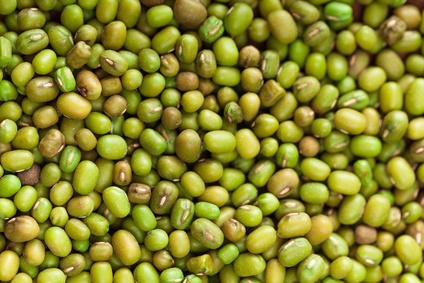Agriculture economist still waiting on commodities markets to improve after China deal announcement
by February 4, 2020 4:38 pm 722 views

The Phase One portion of the trade deal between China and the United States has been signed, but the commodities markets have not moved significantly, according to one agriculture economist.
Scott Stiles, extension economist for the University of Arkansas System Division of Agriculture, said many growers throughout the United States, particularly those heavily vested in export commodities, have been waiting for the signing of the Phase One portion of a trade deal between the United States and China, and the issuance of the third payment of the Market Facilitation Program.
After months of negotiation, Phase One was signed by President Donald Trump and Chinese Vice-Premier Liu He in mid-January. Given the expectation that the deal would boost U.S. commodity exports, however, the markets have responded to the signing in a somewhat disappointing manner, Stiles said.
“To tell the truth, commodity prices reacted more favorably to the announcement of the Phase One agreement on Dec. 13,” Stiles said. “The phrase ‘buy the rumor, sell the fact’ is frequently used in commodity trading. That’s exactly what we’ve seen. Grain, pork, and cotton prices all traded higher in the last half December ’19 and into early January. Since the January 15 signing of Phase One, soybeans have dropped over 30 cents. Other commodities are holding up.”
The agreement is “short on specifics,” Stiles said, numbering 96 pages and seven chapters in length, with about a fourth of its language addressing intellectual property. In the agreement, China agreed to import about $32 billion in additional U.S. agricultural products — on top of a $24 billion baseline — over a two-year period, largely by excluding certain agricultural products from import tariffs.
“China hasn’t committed to tariff exemptions or import levels for any specific products,” Stiles said. “A disappointment to the agricultural community was the fact Chinese tariffs on U.S. ag products remained in place. That gives China some leverage in future trade talks.”
Commodity prices have not moved significantly since the deal was announced. At the end of trading on Monday (Feb. 3) soybean prices per bushel were up 4.5-cents to $8.77 in March futures trading. That number grows to $8.90 in May futures trading. Both price points are within the trading range for the last several months.
China is the top importer of soybeans, and the U.S. soybean export market cratered since the trade war started. Trade experts warn that two factors could slow an increase of soybean imports to China. The country has been dealing with a serious bout of African swine flu that killed millions of hogs and the country is still reeling from the spread of the coronavirus, according to Farm Progress.
Corn prices remained relatively low at the start of the trade week. March futures dropped 2.5-cents to $3.78 per bushel, while May futures are down 2-cents to $3.84 per bushel.
Growers are still waiting on a third Market Facilitation Program payment. At the annual meeting of the American Farm Bureau, U.S. Secretary of Agriculture Sonny Perdue said the third payment would be issued shortly, but did not give a date.
The program began in 2018, intended to aid farmers struggling under depressed commodity prices and the growing trade dispute with China, during which the United States and China imposed tariffs on each other’s exports. In 2019, growers’ troubles were compounded by severe weather-related crop losses. Stiles said many farmers were depending on a third payment just to begin planting in 2020.
“Considering that plans were altered in 2019 due to the weather — people didn’t get to plant as much corn and rice as they’d intended — those appear to be good options in which to expand acres this year,” Stiles said.
With 2020 planting dates still in the offing and much field work likely remaining in the interim, Arkansas farmers are currently studying the safety net provisions of the 2018 Farm Bill. Growers have until March 15 to enroll base acres in the Price Loss Coverage or Agricultural Risk Coverage programs, both part of the 2018 Farm Bill. The bill covers crop years 2019-2023.
The U.S. Department of Agriculture’s Farm Service Agency provides access to Farm Bill decision aids for ARC and PLC programs online at this link.
https://www.fsa.usda.gov/programs-and-services/arcplc_program/index
